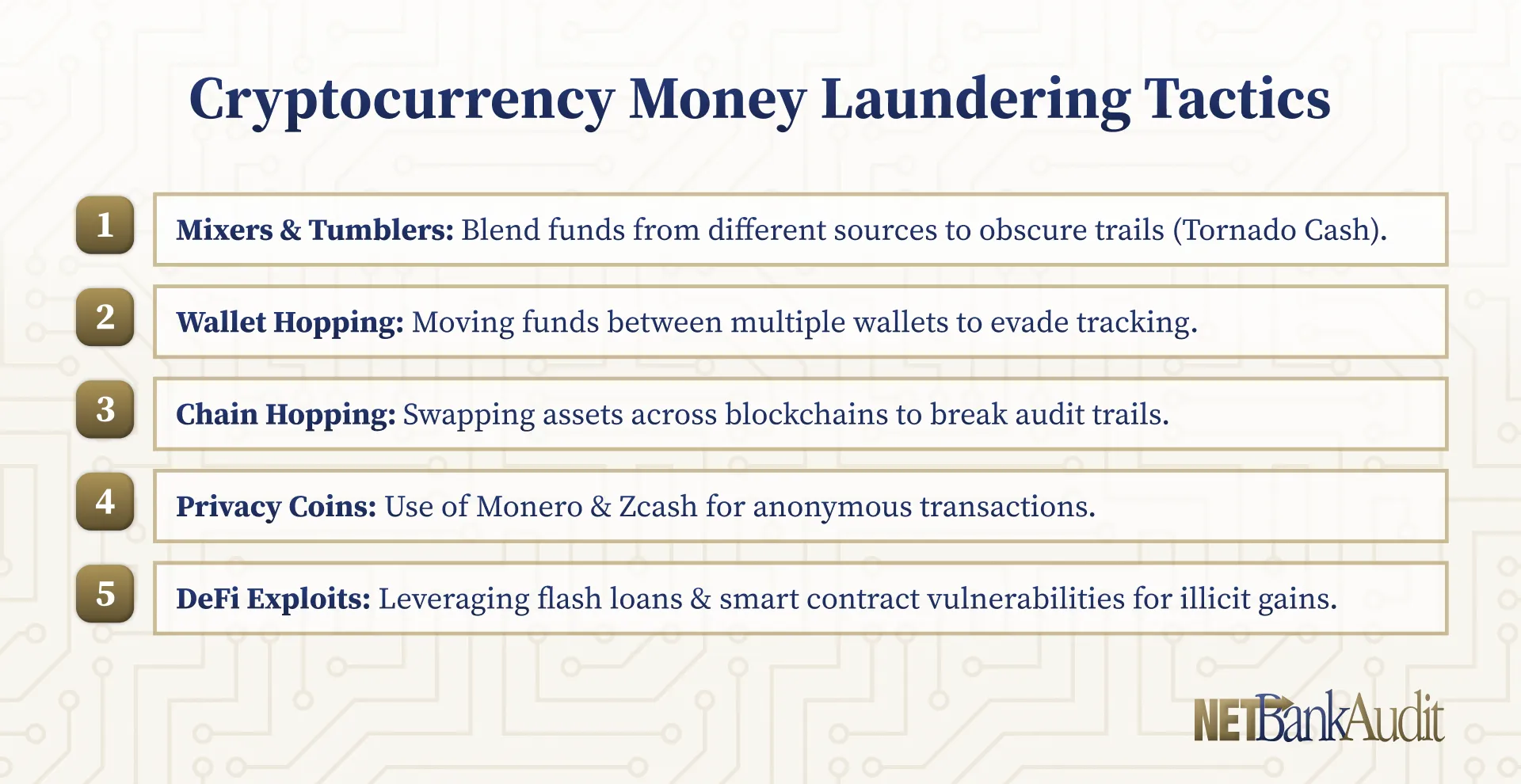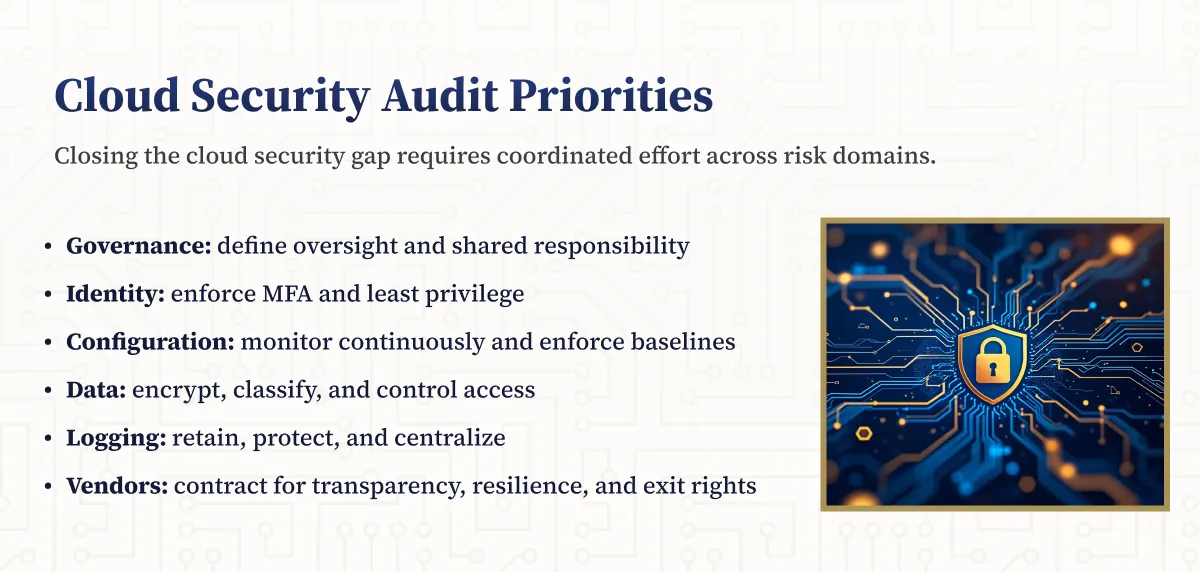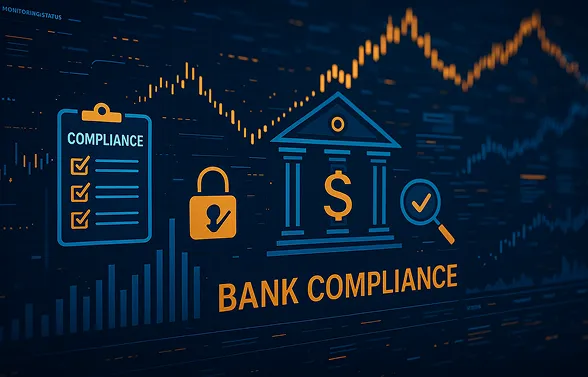The financial industry stands at a critical juncture as technological innovations and globalization reshape the landscape of financial crimes. Traditional methods of money laundering, fraud, and terrorist financing are being overtaken by sophisticated techniques that exploit cutting-edge technologies such as artificial intelligence (AI), machine learning (ML), cryptocurrencies, decentralized finance (DeFi), and digital payment platforms. These advancements present unprecedented challenges to compliance frameworks under the Bank Secrecy Act (BSA), Anti-Money Laundering (AML), Countering the Financing of Terrorism (CFT), and the Office of Foreign Assets Control (OFAC).

Financial crimes now account for an estimated 2% to 5% of global GDP, translating to $800 billion to $2 trillion annually (United Nations Office on Drugs and Crime). In 2020, regulatory fines related to AML compliance failures reached a staggering $10.4 billion worldwide—a 26% increase from the previous year (Fenergo, 2020). These figures underscore the imperative for financial institutions to enhance their compliance programs to effectively mitigate emerging risks.
Artificial Intelligence and Machine Learning Exploitation
The rise of AI and ML has introduced a paradox for financial institutions: while these technologies enhance fraud detection and compliance monitoring, they also empower cybercriminals with sophisticated tools to bypass traditional security measures. AI-driven financial crimes are becoming more prevalent, leveraging deepfake technology, adversarial AI attacks, and automation to outmaneuver compliance controls.
Adversarial AI and Model Manipulation
Criminals are increasingly targeting AI-powered fraud detection systems through adversarial AI techniques, including:
- Model Manipulation: Attackers introduce deceptive data to ML models, causing them to misclassify fraudulent activities as legitimate transactions. By feeding false transaction patterns into AI-based monitoring systems, criminals can evade detection and launder illicit funds.
- Evasion Attacks: Fraudsters craft inputs specifically designed to confuse AI models, resulting in false negatives that allow suspicious transactions to pass through undetected.
- Data Poisoning Attacks: Malicious actors inject compromised data into training datasets, corrupting AI outputs and reducing the effectiveness of fraud detection models.
These attacks highlight the urgent need for financial institutions to implement adversarial testing and explainable AI (XAI) to enhance model transparency, accountability, and resilience.
Deepfake and AI-Driven Fraud
One of the most concerning developments is the use of AI-generated deepfakes in financial fraud schemes. Fraudsters deploy deepfake voice and video technology to impersonate executives, clients, or government officials, authorizing fraudulent transactions.
- Case Study: In 2019, the CEO of a UK-based energy firm was deceived into transferring €220,000 after a scammer used AI-based deepfake voice technology to impersonate the CEO's boss ( TrendMicro).
- Synthetic Identity Fraud: Criminals combine real and fictitious information to create synthetic identities, bypassing KYC protocols and opening fraudulent accounts. 46% of financial institutions reported cases of synthetic identity fraud in the past year. (Statista). According to the Federal Reserve, synthetic identity fraud is the fastest-growing type of financial crime in the United States, accounting for 20% of credit card charge-offs (Federal Reserve, 2019).
AI-driven phishing scams are also on the rise, with fraudsters using generative AI to craft convincing phishing emails that bypass traditional security filters.
Regulatory and Compliance Challenges
The rapid evolution of AI-driven threats presents significant challenges for compliance frameworks:
- Opaque Decision-Making: AI's complex algorithms can operate as "black boxes," making it difficult for compliance teams to interpret and audit suspicious activity flags. This opacity complicates efforts to ensure accountability and traceability.
- Resource Intensiveness: Advanced AI security measures require specialized personnel and continuous investment. Financial institutions not employing AI security solutions faced average data breach costs of $5.72 million, compared to $3.84 million for those with AI defenses (IBM, 2023). AI and automation adoption led to faster breach containment, reducing the time to identify and contain breaches by nearly 100 days.
- Regulatory Scrutiny: Regulatory bodies are advocating for AI governance models that distribute liability across financial institutions, AI developers, and regulators. For instance, OCC Comptroller Michael J. Hsu suggested a shared responsibility model in AI compliance (OCC, 2022).
Mitigation Strategies
To counter these risks, financial institutions could:
- Implement Explainable AI (XAI): Deploy AI models that provide transparency and interpretability, facilitating better understanding of decision-making processes.
- Enhance Biometric Authentication: Utilize advanced biometric verification methods to reduce the risk of deepfake-based fraud.
- Adopt AI Risk Management Guidelines: Align compliance frameworks with regulatory expectations by incorporating AI governance and risk management practices.
Cryptocurrency and DeFi Innovations
The emergence of cryptocurrencies and decentralized finance (DeFi) platforms has fundamentally altered the financial landscape, offering greater autonomy and efficiency while simultaneously introducing new avenues for money laundering, fraud, and terrorist financing. Criminals exploit the anonymity, pseudonymity, and decentralization inherent in these systems, creating a significant challenge for financial compliance.

Exploitation of Anonymity and Pseudonymity
Cryptocurrencies, particularly privacy coins like Monero and Zcash, are designed to obscure transaction details, making them highly attractive for illicit activities. Criminals use a variety of techniques to launder funds and evade detection:
- Mixers and Tumblers: Services like Tornado Cash obfuscate transaction trails by blending cryptocurrency from multiple sources, making it nearly impossible to trace funds.
- Wallet Hopping and Chain Hopping: Criminals transfer assets between multiple wallets and across different blockchains to evade compliance monitoring.
A 2022 Chainalysis report revealed that illicit cryptocurrency addresses received $14 billion in 2021, nearly double the $7.8 billion recorded in 2020. This sharp increase demonstrates how criminals are scaling their use of digital assets for illicit financial flows. (Chainalysis, 2022).
DeFi-Specific Threats
The rapid expansion of the DeFi ecosystem has introduced additional vulnerabilities:
- Flash Loan Attacks: Exploit DeFi lending mechanisms by artificially manipulating token prices and executing rapid transactions to drain funds.
- Smart Contract Exploits: Coding flaws in DeFi protocols allow hackers to exploit vulnerabilities, leading to significant financial losses. For instance, the Poly Network hack in 2021 resulted in losses exceeding $600 million (Chainalysis, 2022).
Compliance Challenges in Cryptocurrency and DeFi
A Bank for International Settlements (BIS) report found that 1.1% of all cryptocurrency transactions in 2019 (worth approximately $11 billion) were illicit, reflecting the growing scale of digital asset-related financial crimes. Traditional compliance frameworks face difficulties addressing the decentralized and pseudonymous nature of digital assets:
- Limited KYC Enforcement: Many DeFi platforms lack rigorous KYC requirements, enabling anonymous transactions.
- High-Velocity, Cross-Chain Transactions: Movement of assets across multiple blockchains complicates transaction monitoring and forensic analysis.
- Inconsistent Global Regulations: Regulatory standards vary across jurisdictions, creating loopholes that criminals can exploit. The Financial Action Task Force (FATF) has called for global coordination to address these challenges (FATF, 2021).
Mitigation Strategies
To address these risks, financial institutions and regulators should:
- Enhance KYC Protocols: Extend rigorous KYC and Customer Due Diligence (CDD) procedures to cover cryptocurrency and DeFi transactions.
- Deploy Blockchain Analytics Tools: Utilize AI-driven analytics to trace and monitor illicit fund movements across blockchains.
- Develop Cross-Border Regulatory Frameworks: Promote international cooperation to establish consistent regulations and close jurisdictional loopholes.
Digital Payment Platforms: Balancing Convenience and Compliance
The rise of digital payment platforms—including mobile wallets, peer-to-peer (P2P) applications, and instant payment systems—has transformed global finance by enabling seamless, fast transactions. However, this shift towards cashless payments introduces new vulnerabilities that criminals exploit to facilitate money laundering, fraud, and illicit transactions.
Exploitation of Speed and Anonymity
The core advantage of digital payment platforms—instantaneous, frictionless transactions—also poses a major challenge for financial crime prevention. Compliance teams struggle to monitor real-time transactions at scale, allowing criminals to exploit key weaknesses:
- Smurfing and Structuring: Criminals break down large sums into multiple small transactions to avoid triggering AML reporting thresholds. Learn more in our full structuring guide.
- Anonymous and Prepaid Accounts: Some platforms allow minimal KYC verification, while others support prepaid reloadable cards that are not tied to specific individuals, making it easier to obscure transaction origins.
- Cryptocurrency Integration: The increasing adoption of crypto-friendly payment services introduces further complexity, as pseudonymous transactions blur traditional audit trails.
Cross-Border Challenges and Emerging Payment Risks
As digital payment networks expand, the potential for cross-border money laundering grows. Criminals exploit exchange rate fluctuations, regulatory gaps, and offshore digital payment services to obscure the movement of illicit funds.
Several emerging risks further complicate compliance efforts:
- QR Code Fraud: Fraudsters tamper with QR codes to redirect payments to unauthorized accounts.
- Tokenized Payments: While tokenization enhances security by replacing sensitive data with encrypted tokens, it also complicates transaction tracing.
- AI-Driven Fraud Schemes: Criminals are deploying AI-powered bots to execute automated fraud at scale, making detection more difficult.
The global digital payments market is projected to reach $11.55 trillion in 2024, growing at 9.52% annually until 2028 (Statista, 2022). This growth is accompanied by increasing fraud:
- Authorized Push Payment (APP) Fraud: A leading global fraud threat where victims are tricked into authorizing payments to fraudulent accounts. APP fraud is expected to double by 2026, reaching $5.25 billion across the U.S., U.K., and India (LexisNexis Risk Solutions, 2021).
- Merchant Losses from Online Payment Fraud: Expected to surpass $362 billion globally between 2023 and 2028, with $91 billion in losses forecasted for 2028 alone (Juniper Research, 2021).
Mitigation Strategies
To counter digital payment fraud risks, financial institutions must:
- Enhance transaction monitoring systems with real-time AI-driven analytics.
- Strengthen KYC requirements on prepaid and P2P accounts.
- Deploy AI-based fraud detection models to identify suspicious transaction patterns before fraud occurs.
Regulators must also harmonize global compliance standards to address jurisdictional loopholes and strengthen oversight of high-risk digital payment providers.
%201%20(1).svg)
%201.svg)
THE GOLD STANDARD INCybersecurity and Regulatory Compliance
Cloud Banking Vulnerabilities: The Double-Edged Sword of Innovation
As financial institutions increasingly adopt cloud-based solutions, they gain scalability and efficiency but also face heightened security, compliance, and operational risks. The reliance on third-party cloud providers introduces new vulnerabilities that criminals can exploit to compromise sensitive financial data.

Security Risks: Data Breaches, Shadow Data, and Phishing
Cloud banking expands attack vectors, increasing the likelihood of high-impact cyberattacks. Key risks include:
- Data Breaches: Misconfigurations, insecure APIs, and vulnerabilities can expose sensitive data.
- Case Study: The Capital One breach in 2019 resulted from a misconfigured firewall in their AWS cloud environment, exposing personal data of over 100 million customers and costing the company $80 million in fines (U.S. Office of the Comptroller of the Currency, 2020).
- Shadow Data Risks: Unmanaged or improperly secured data stored in the cloud increases the risk of unauthorized access.
- In 2023, 35% of data breaches involved shadow data, leading to 16% higher costs compared to breaches without it (IBM, 2023).
- Credential Compromise and Phishing: Accounted for 16% and 15% of breaches respectively, emphasizing the importance of robust authentication mechanisms.
Compliance and Regulatory Challenges
Cloud banking introduces significant compliance challenges due to data sovereignty, third-party dependencies, and auditing complexities:
- Data Residency & Sovereignty: Regulations often require financial data to be stored within specific jurisdictions—yet cloud providers distribute data globally.
- Limited Transparency: Financial institutions have limited visibility into cloud provider security operations, complicating auditing and regulatory compliance.
- Third-Party Risk Management: Financial institutions must assess cloud service providers' compliance with AML, PCI DSS, GDPR, and banking cybersecurity frameworks.
Operational Risks: Service Outages and Integration Challenges
Cloud disruptions can cause widespread service failures, impacting financial institutions' ability to conduct transactions. Major concerns include:
- Cloud Outages: Interrupt critical banking services, leading to reputational and financial losses.
- Legacy System Integration: Migrating legacy banking infrastructure to the cloud introduces compatibility and security challenges.
- Continuous Tech Evolution: Cloud security frameworks require ongoing adaptation, demanding specialized personnel and substantial investment.
Mitigation Strategies
To mitigate cloud banking risks, financial institutions should:
- Implement robust cloud security frameworks, including zero-trust architectures.
- Adopt AI-driven breach detection tools to monitor unauthorized access attempts.
- Strengthen third-party security assessments to ensure cloud providers meet financial regulatory requirements.
Regulators must also establish clear compliance mandates to ensure cloud service providers adhere to financial security standards.
Regulatory and Compliance Implications: Navigating the Evolving Landscape
As financial threats evolve, regulatory bodies are tightening compliance expectations, requiring financial institutions to enhance policies, procedures, and technology-driven fraud detection mechanisms.

Enhancements in KYC and Customer Due Diligence (CDD)
Regulators are emphasizing real-time customer identity verification to combat financial crime risks:
- Biometric Authentication: Implement fingerprint, facial recognition, and voice identification to enhance verification processes.
- Behavioral Analytics: Use AI to monitor user behavior patterns and detect anomalies indicative of fraudulent activity.
- Continuous KYC (cKYC): Adopt ongoing monitoring of customer profiles to promptly identify and respond to risk indicators.
Strengthening Transaction Monitoring and Sanctions Screening
Financial institutions must enhance real-time fraud detection with advanced AI-powered transaction monitoring tools:
- AI and ML Integration: Identifies high-risk transactions across large volumes of cross-border financial flows.
- Sanctions Screening Upgrades:
- Real-time global sanctions list updates to detect restricted entities.
- AI-driven contextual analysis to uncover hidden financial links to high-risk individuals.
Regulatory Reporting and AI Model Governance
Regulators are focusing on higher-quality suspicious activity reporting (SAR) and AI risk management:
- Automated SAR Filing: Improves reporting accuracy and reduces regulatory penalties.
- AI Model Governance: Regulators demand that financial institutions document AI biases, limitations, and decision-making processes.
Regulatory Recommendation: OCC Comptroller Michael J. Hsu (2024) has called for a shared responsibility model in AI compliance, mirroring cloud security frameworks, to distribute liability across banks, AI developers, and regulators. (OCC, 2024).
Staff Training and Compliance Culture Shifts
A compliance-first culture is crucial to adapting to emerging threats:
- Specialized Compliance Training: Financial institutions must educate teams on AI fraud risks, cryptocurrency compliance, and evolving AML regulations.
- Cybersecurity Awareness Programs: Strengthen workforce resilience against AI-enabled phishing, deepfake fraud, and insider threats.
- Integrating Compliance into Performance Metrics: Institutions should align employee KPIs with compliance objectives to reinforce accountability.
Partner with NETBankAudit to Strengthen Your Security Posture
As financial crimes become increasingly sophisticated, financial institutions must stay ahead by fortifying their compliance programs against emerging threats. AI-driven fraud, cryptocurrency exploitation, and digital payment vulnerabilities demand proactive, technology-driven strategies that go beyond traditional compliance measures.
NETBankAudit specializes in strengthening financial institutions' security and compliance frameworks, offering expert guidance in BSA/AML/CFT risk management, OFAC compliance, and regulatory audits. By partnering with NETBankAudit, organizations gain access to cutting-edge security assessments, advanced fraud detection strategies, and tailored compliance solutions that help them navigate complex financial crime landscapes.
Staying compliant isn’t just about avoiding penalties—it’s about preserving financial stability, protecting customers, and reinforcing institutional trust. With NETBankAudit’s expertise, your institution can proactively identify vulnerabilities, implement robust safeguards, and ensure alignment with evolving regulatory expectations. Secure your compliance future today by partnering with NETBankAudit to build a stronger, more resilient financial security posture.
.avif)

.svg)

.webp)

.webp)











.webp)



.webp)

%201.webp)
.webp)
%20(3).webp)


.webp)


%20Works.webp)

.webp)




.webp)
%20(1).webp)

.webp)










.webp)
.webp)

.webp)
.webp)
.webp)
.webp)
.webp)
.webp)
%201.svg)